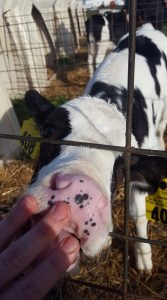For this post I will be discussing the importance of the topic on global climate change because, as discussed in class, it has and will continue to affect not only the agriculture practiced near my location but also the agriculture practiced in a difficult setting already such as California- regarding their water problems. I would like to discuss the water shortages faced in California and why global climate change would heavily affect them. Water shortages in California are normal- they face this problem and with the weather increasing over time, this problem becomes a bigger deal because the more heat expressed in this environment means more production. But this also means there will be a bigger demand for water to grow these plants for production. With the current shortage of water for agriculture, the demand will not be able to be met because there simply isn’t as much snow being melted to reach the increased capacity they would need to grow more. So not only is the rising temperature a problem, by 2050, the population will have exponentially grown and we are still working with the same amount of crop production that will need to produce more and with less resources- such as water in the process. So because we are getting heavier rain intensity rather than more snowfall, less snow melts for the plants to grow and utilize that melted snow for water as a negative impact of the changes brought upon agriculture due to climate change. This can be supported in Food Security’s Fragile Balance article, specifically the Long-Term Outlook portion that said, “Increasing temperature is putting strain on crops, specifically water, because more droughts which has a direct impact on agriculture…”
Additionally, with the higher temperatures comes a readjustment on the way farmers are able to plant and harvest their crops. Even a few degrees higher every few years makes a difference because farmers ultimately have to change the way they use their technology to get the most optimal yield from their crops. This means having to find a newer source of technology to use through innovation in order to still make a profit but also give consumers what they want whether it be traditional or organic crops. A positive aspect involved is that there is CO2 that is absorbed by plants to produce oxygen. Overall, climate change affects everyone presently and in the future because we all will have to find ways to utilize the limited resources available to us in order to meet the hunger demand of people.



